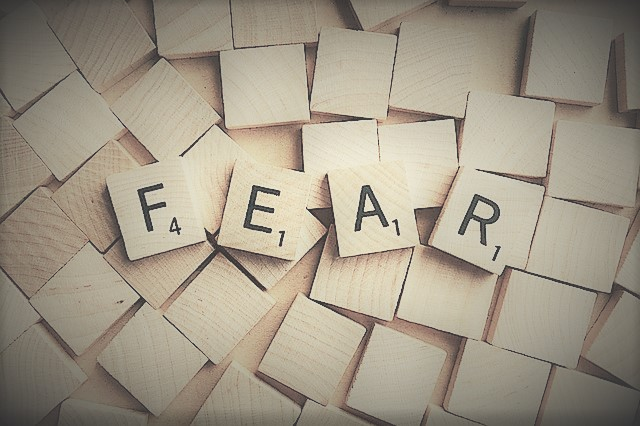Fear or Phobia is just as important as happiness, peace and other more pleasant emotions. We tend to ostracize fear because of the dreadful ways it can show up in our lives. Fear isn’t welcomed unless it is our idea, right?
Horror movies, roller coasters or adrenalin-pumping feats are the controlled-fear stimuli we get a thrill from, all other fear-related influences are considered unwelcome intruders in our lives.
We enjoy the horrific scenes depicted in movies because we are aware of the fictional nature of the film, which affords us a sense of psychological distancing, according to a 1994 study on the subject.
In spite of our love-hate relationship with fear, we need to give it due respect.
After all, it is fear that tells us to get out of harm’s way and it often keeps us from doing things that could get us into trouble. We owe fear an apology. It helps us stay alive and keeps us safe.
But sometimes, fear butts in where it doesn’t belong and hangs around, sticking to certain scenarios or objects and making us miserable. Anxiety is a broad spectrum type of fear that can cling to a variety of perceived dangers, and while this is also a highly unpleasant emotion, it is often non-specific or may be generalized.
The frightened brain engages a sequence of autonomic responses and our bodies react accordingly. Most of our fear-based responses are automatic and hard wired; there is often very little “thought” that goes into a fear response; it is one of our most primal of instincts.
When fear takes on a specific form and it impacts one’s ability to relax and engage in aspects of life, it is known as a phobia. A phobia is like fear jacked up on energy drinks.
It falls into the category of anxiety disorders, and affects approximately 10% of the American population. Often, when we are at a distance from our phobias it is easy to remind ourselves how irrational these feelings are, but when confronted by the feared situation in real time, it takes on a life of its own.
Reactions to phobias can range from simple avoidance of feared stimuli to obsessing about the fear, experiencing panic attacks, racing heart, tremors and fainting.
While the exact cause of phobias is unknown, there are several theories about their origins. Some phobias may be based in a traumatic experiences of the past. Perhaps an event occurred in which a person felt frightened, or felt as if his or her safety was at risk. Trauma can solidify in the circumstances around that event and a phobia can stem from it.
Phobias are also thought to be passed along through family of origin,
whether it is taught intentionally or passively. An ancestor who feared spiders may have instilled that fear into his/her offspring. Maybe somewhere along the way, that phobia became an unwitting family trait; passed through each generation like an unwelcome cowlick that seems to hit almost every branch of the family tree.
Whatever the cause, the average age of a phobia onset is 7 years old. That makes a lot of sense in terms of brain development, since the 90-95% of that development takes place before the age of five years. This means that much of the phobias that we end up experiencing are hard-wired into what is known as the “reptilian brain”.
The primitive part of the brain that is geared toward survival doesn’t care about logic and reason, it is only concerned about danger. Irrational phobias can become a real pestilence to our daily lives because we know they are lying to us. Irrational phobias scream “danger, danger” and send us into fight, flight or freeze mode, when in reality there is nothing to fear.
As armchair psychologists, we love to learn about phobias; the weirder the better.
We are morbidly fascinated by the variety of ways our minds can interpret seemingly-harmless stimuli. One person’s love for butterflies can be another’s lepidopterophobia nightmare.
Luckily, we don’t have to be stuck with our phobias forever. Treatment options for phobias include Cognitive Behavioral Therapy and a slow process known as Exposure Therapy, which helps people become desensitized to the phobia through controlled, gradual exposure over time.
Hypnotherapy is another treatment option to deal with phobias.
Hypnosis is a method to slow the brain waves and offers a deeply relaxed state of mind in which to work through feelings and situations. Reprogramming the way our minds respond to the feared situation is an important aspect of hypnotherapy.
As hypnotherapist Dawn Walton states in an interview with HuffPost, “If there is no rule in the rulebook for the subconscious to follow, then there is no fight, flight, freeze reaction triggered. This is not about coping techniques. It is about keeping the freedom to think, about not being triggered in the first place.”
For some, managing phobias may be a good alternative. Acceptance and Commitment Therapy (ACT) can offer useful strategies to manage life “in spite of” the presence of phobias. Through ACT skills, we can increase psychological flexibility and improve our ability to manage emotions that can become overwhelming when phobias are running the show.
Regardless of how we choose to treat a phobia, it is important to offer ourselves compassion and to refrain from making extreme demands on ourselves as we retrain our brains to let go of the fear.
Meditation, mindfulness and patience are a few positive ways we can manage our feelings while facing phobias.
Since most phobias are developed prior to the age of seven years, it is important to treat oneself as compassionately as a child. Berating yourself and expecting too much too soon is only going to reinforce the phobia and create a more deeply rooted sense of fear and loss of control. And remember, there is always someone else out there whose phobia seems even more strange than your own.
Fear is in the eye of the beholder, afterall.
